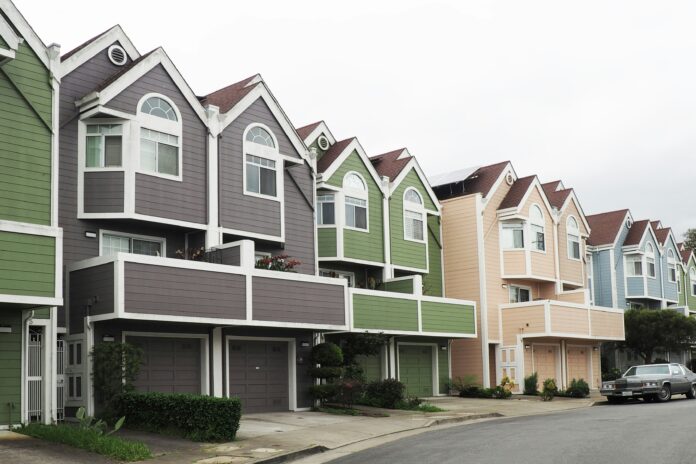The homebuilding industry is showing concerning signs of stagnation, with key indicators pointing to a lack of buyer enthusiasm despite lower mortgage rates. September saw buyer traffic at homebuilder sites rise slightly to an index level of just 27 out of 100, marking one of the lowest readings in 15 years—since the 2008 financial crash. This is part of a broader trend that suggests falling mortgage rates are not bringing buyers back to the market as expected.
Looking beyond just buyer traffic, other forward-looking housing demand indicators, including mortgage applications and even online searches related to home buying, continue to decline. These metrics, cumulatively tracked through the first half of September, are still down 9% year-on-year. Even more concerning, they have fallen a massive 40% from their pre-pandemic levels in 2019.
Despite all the noise surrounding declining mortgage rates in the news, homebuyers appear largely indifferent, and there are no strong signs of a recovery in demand. It raises an important question: what will happen in the next one or two months if these trends persist, even after the Federal Reserve officially cuts rates? Many sellers across the U.S. housing market have chosen to keep prices high or pull their listings, hoping for market improvement in the near future. However, if the anticipated buyer rebound fails to materialise, we could be heading towards a significant market correction, especially if sellers realise that demand won’t pick up as quickly as they hoped.
One region particularly vulnerable to this is the Sun Belt, where homebuilding sentiment is at its weakest. According to the National Association of Home Builders (NAHB) survey, builder sentiment in the South registers just 40 out of 100, the lowest among all U.S. regions. The Northeast, by contrast, shows a more resilient market, with builder sentiment at a healthier 56 out of 100. This divergence highlights a growing regional shift in the housing market: the bubble-driven boom in the South appears to be fading, while markets in the Northeast, backed by stronger fundamentals, are holding up better.
Interestingly, the NAHB survey also reveals a curious disconnect between builder sentiment and actual home sales figures. Despite the pessimistic sentiment, new home sales have been relatively strong, even returning to pre-pandemic levels, as reported by the U.S. Census. This discrepancy suggests that builders may be driving sales by offloading homes in bulk to investors, rather than selling to individual homebuyers—a trend that is increasingly visible in states like Florida and Tennessee.
Another notable trend in the homebuilding industry is the growing fragmentation between large and small builders. Mega-builders such as Lennar and DR Horton are thriving, steadily gaining market share, while smaller, local builders are struggling. As of now, Lennar and DR Horton together make up almost 25% of the housing market. This concentration of market power among the larger builders creates additional challenges for the smaller firms trying to compete in an already difficult environment. With these larger builders often using mortgage rate buydowns to attract buyers, it becomes even harder to get a clear sense of what’s truly happening in the market.
Taken together, the data paints a somewhat bleak picture for the homebuilding industry. Despite the efforts to lower mortgage rates, buyers remain hesitant, and forward-looking demand indicators show no signs of a meaningful turnaround. For now, it appears that homebuyers are sitting on the sidelines, waiting for prices to come down before re-entering the market.
This data will be closely watched in the coming weeks and months to see if any changes emerge. However, as things stand, it seems the housing market is at a standstill, with homebuyers effectively “on ice” until price adjustments take place. The current situation underscores the massive housing bubble that has developed, particularly when adjusted for inflation, and raises questions about how long the market can hold out before a more significant correction occurs.


